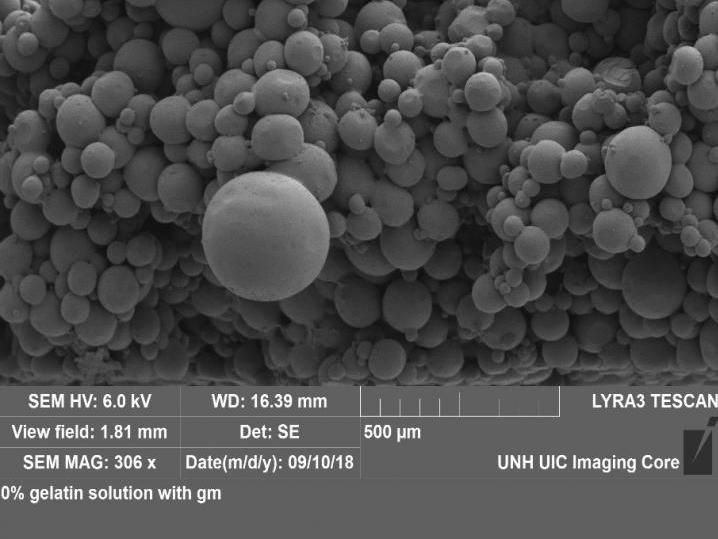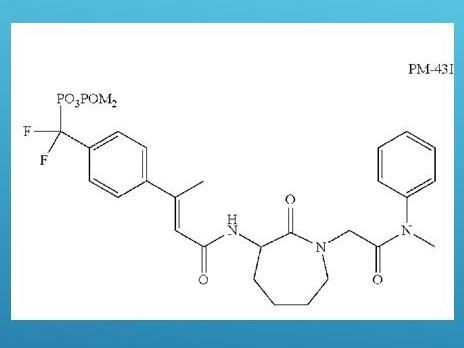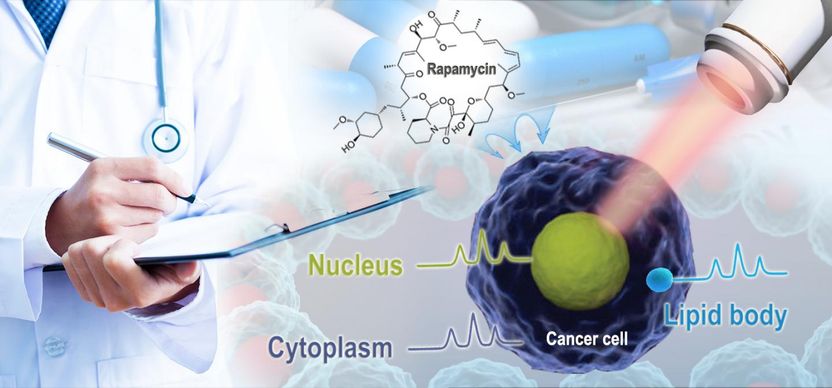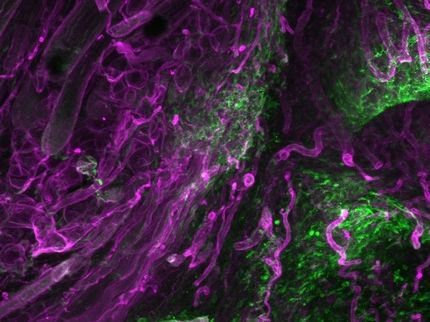A more effective hydrogel for healing wounds
Researchers at the University of New Hampshire have created an easy-to-make, low-cost injectable hydrogel that could help wounds heal faster, especially for patients with compromised health issues.

Electron microscope image of the porous hydrogel
UNH
Wound healing can be complex and challenging, especially when a patient has other health obstacles that seriously impede the process. Often injectable hydrogels are applied to irregular shaped wounds, like diabetic ulcers, to help form a temporary matrix, or structure, to keep the wound stable while cells rejuvenate. The caveat is that current hydrogels are not porous enough and do not allow neighboring cells to pass through toward the wound to help it mend.
"While valuable for helping patients, current hydrogels have limited clinical efficacy," said Kyung Jae Jeong, assistant professor of chemical engineering at UNH. "We discovered a simple solution to make the hydrogels more porous and therefore help to speed up the healing."
In the study the researchers outline how they made a macroporous hydrogel by combining readily available gelatin microgels - hydrogels that are a few hundred microns in diameter - with an inexpensive enzyme called microbial transglutaminase (mTG). Gelatin was used because it is a natural protein derived from collagen, a protein found in connective tissue in the body such as skin. Assembling these tiny microgels with mTG helped create a hydrogel with large enough pores for the neighboring cells to move into the wound for repair. In addition, this new injectable formulation allows for the slow release of protein drugs to aid wound healing, such as platelet-derived growth factor (PDGF). The researchers compared conventional nonporous hydrogels with the new macroporous hydrogels, and found a notable increase in the migration of tissue cells inside the hydrogel, which is the hallmark of wound healing.
Along with diabetic ulcers, the macroporous hydrogel could help with other forms of healing on the skin, cornea, internal organs during surgery and even has military implications.
Original publication
Other news from the department science

Get the life science industry in your inbox
By submitting this form you agree that LUMITOS AG will send you the newsletter(s) selected above by email. Your data will not be passed on to third parties. Your data will be stored and processed in accordance with our data protection regulations. LUMITOS may contact you by email for the purpose of advertising or market and opinion surveys. You can revoke your consent at any time without giving reasons to LUMITOS AG, Ernst-Augustin-Str. 2, 12489 Berlin, Germany or by e-mail at revoke@lumitos.com with effect for the future. In addition, each email contains a link to unsubscribe from the corresponding newsletter.
Most read news
More news from our other portals
Last viewed contents

David vs Goliath: How a small molecule can defeat asthma attacks

Single-cell test can reveal precisely how drugs kill cancer cells - New method sees how pharmaceuticals induce cancer cell death and how cancer cells adapt






















































